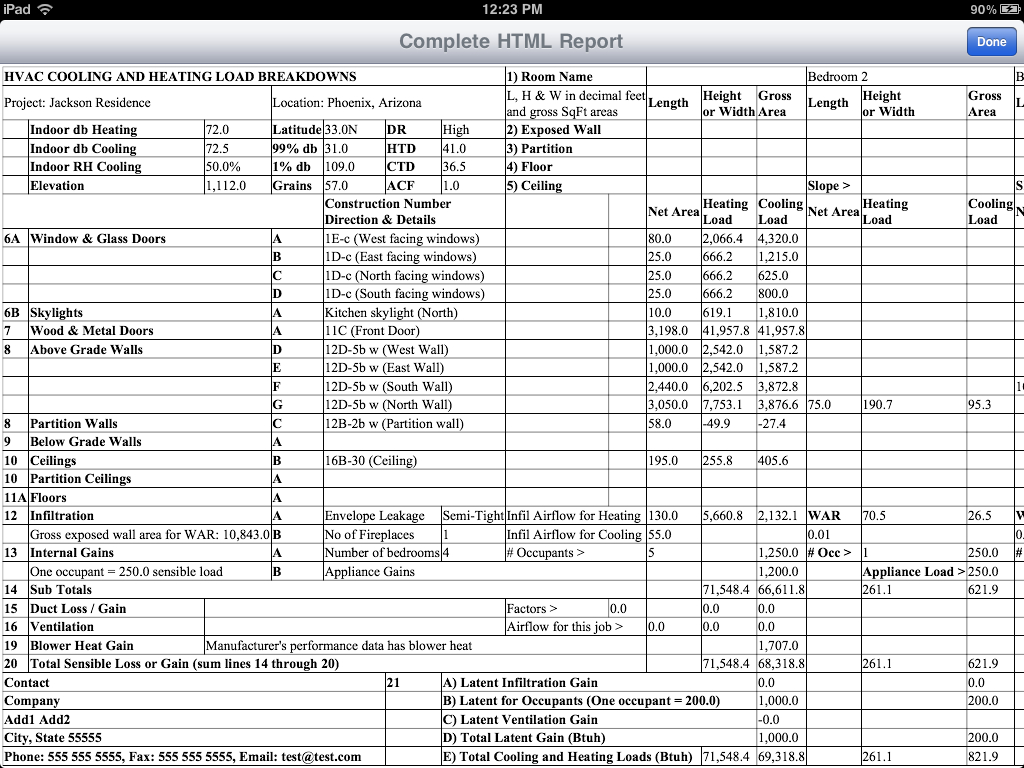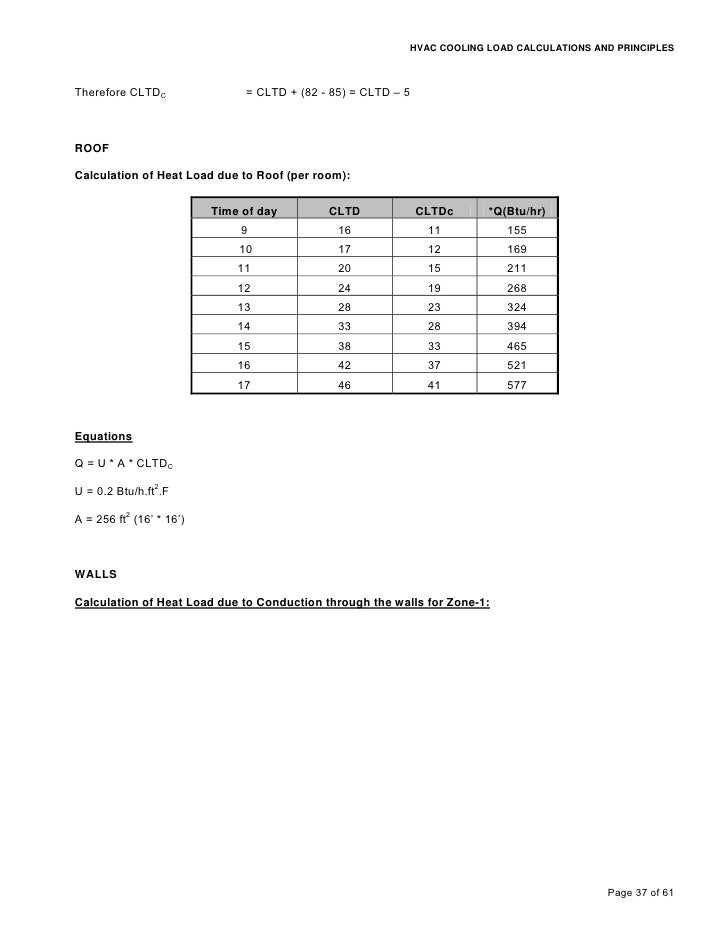

- #Cooling load calculation rts program how to
- #Cooling load calculation rts program manual
- #Cooling load calculation rts program software
- #Cooling load calculation rts program windows
The below is my bedroom layout drawing and windows detail: Now, I'll walk you through the calculation using my bedroom as the example for the entire cooling load calculation. You can decide the outdoor temperature based on your practices or find out the average outdoor temperature of your city from weather stations or climate websites like timeanddate. For example, in Malaysia, we usually design at an outdoor temperature of 35☌. To calculate windows and other sensible cooling loads, you need to decide the outdoor temperature first. But, the most important design parameter is the outdoor temperature. Windows glass load factor is affected by the orientation of the windows (eg: north, south, east, west). Nevertheless, just follow through this article to understand the basic procedures first. However, new versions like the 2021 ASHRAE Handbook and 2017 ASHRAE Handbook on Amazon have different values and additional procedures. The glass load factors of various windows and their shading types are outlined in the ASHRAE Handbook of Fundamentals 2001. The sensible cooling load of windows is calculated by multiplying the area of the windows by the glass load factor (GLF). Windows Sensible Cooling Load Calculation
#Cooling load calculation rts program how to
It may look hard to learn but hang on, the following is the step-by-step on how to calculate the cooling load. So, it'll be a total of 10 steps to calculate the cooling load for a room. To be frank, it is quite complicated as well.ĪSHRAE residential cooling load calculation can be broken into 7 parts for the following:Īfter that, I'll personally add in another three steps to consider duct loss, an outdoor air system and a safety factor.
#Cooling load calculation rts program manual
It is a manual way to calculate the cooling load. So, I've digested the residential cooling load calculation suggested by ASHRAE. Some are extremely complicated and require a computer or programming to perform the calculation which, we don't want to get into them now. There are a few methods suggested by ASHRAE to calculate the cooling load. ASHRAE Residential Cooling Load Calculation So, let's take a look at one of the cooling load calculation methods suggested by ASHRAE. Nevertheless, we need to understand the fundamentals of cooling load calculation so that we know how Rule of Thumb works and thus, how to apply it correctly. In other words, the air conditioners in your house and office may be sized with Rule of Thumb. Furthermore, it has been proven to be useful by reputable consulting firms. After all, it is developed by experienced engineers over time to get things done quicker. However, it needs to be used by experienced engineers. Personally, I don't see Rule of Thumb as a bad practice. So, when Rule of Thumb is used to estimate the cooling load required for a 150 sqft bedroom, the result is 9000 btu/hr or 1 horsepower or other forms of units which you can see all of them in my BTU unit conversion post. Other Rule of Thumb figures as the below table: Application For large halls, the standard Rule of Thumb is 120 btu/hr.sqft. In Malaysia, the standard Rule of Thumb is 60 btu/hr.sqft for standard rooms such as the bedroom, living room and office space. Most engineers and even reputable consulting firms are using Rule of Thumb to estimate the required cooling load of both residential and commercial buildings. What I mean by proper cooling load calculation is that the calculation is not done by using the Rule of Thumb.

But, when it comes to proper cooling load calculation, they have no idea. Other HVAC calculations like chilled water pipe sizing, grille sizing and pressurization fan sizing are learnable from my seniors and managers. How to Calculate Cooling Load?Ĭooling load calculation is the most mysterious thing for me as an HVAC engineer.
#Cooling load calculation rts program software
Only a handful of engineers know how to calculate cooling load manually.Īlthough software tools provide more accurate results, they mostly require detailed inputs which most people and even engineers don't have or are unable to get their hands on. Meanwhile, many HVAC companies use software tools such as Manual J and Wrightsoft to conduct cooling load calculations. Generally, most engineers perform cooling load calculations using the Rule of Thumb. Most engineers use a rule of thumb to size air conditioners but, what are the other so-called proper way to do cooling load calculations? Cooling load calculation is one the most challenging yet mysterious things in the HVAC industry.


 0 kommentar(er)
0 kommentar(er)
